Seaweeds of the South African South Coast


Order Ceramiales
Family Ceramiaceae
Ptilothamnion polysporum Gordon-Mills & Wollaston in Wollaston 1984: 293, figs. 2-6, 9-11
Plants epilithic or epiphytic on a variety of other algae, not developing an endophytic system, but creeping filaments attached by unicellular haptera. Erect filaments up to 15 mm tall, but as a rule much shorter in epiphytic plants. Filaments in basal areas usually little branched, ca. 50-60 µm in cross section, cells about 3-5(-7) times as long, in the fertile tips thallus branched, the cells much shorter, the apical cells not much narrower.
Polysporangia in branched thallus apices on the adaxial sides of branches, mostly containing 8-12 spores, measuring 85-110 x 75-100 µm. Spermatangial stands sessile, more or less alternating on several subapical cells of erect axes, with a 3-celled axis, measuring ca. 100 x 60 µm at maturity. Female fertile filament two-celled, developed in apical position, but overtopped by two involucral filaments from the hypogenous cell that may develop new female stands, even if the first-formed carpogonium is successfully fertilised. Mature carposporophytes ca. 180 µm in diameter, containing relatively few spores of ca. 50 µm; they show successive development.
Collections, ecology and regional distribution
Found from Swartklip in False Bay along the whole south and east coasts (18-58) into Mozambique (Stegenga et al. 1997).
World distribution : Also in Northern Namibia, but probably absent on the South African west coast and southern Namibia. Australian material was included tentatively in this species as reproductive structures were absent (Wollaston 1984).
Type locality: St. Michaels-on-the-Sea, Natal, South Africa (Wollaston 1984).
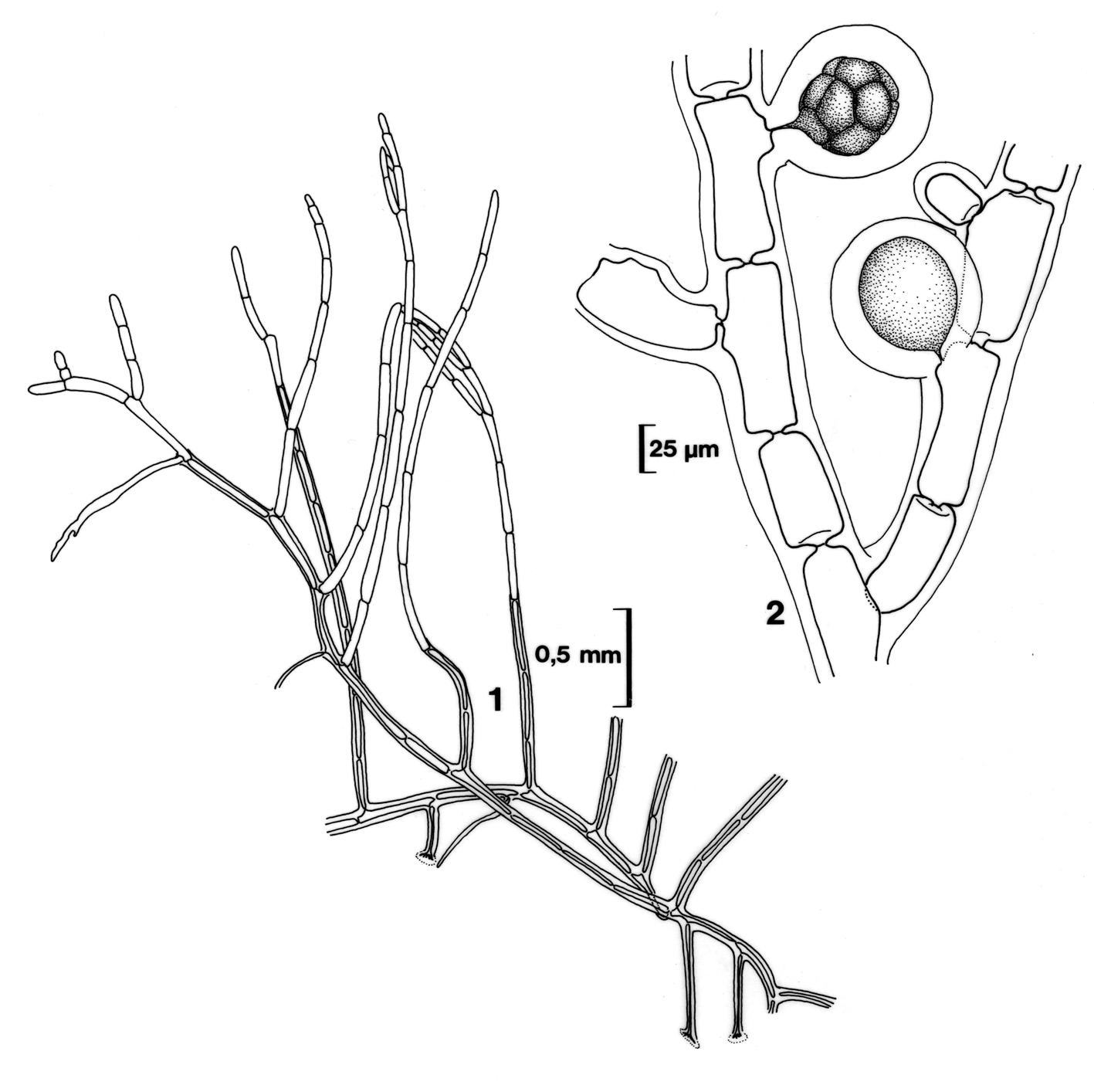
Ptilothamnion polysporum. 1 Habit. 2 Polysporangia. Reproduced from Stegenga et al. (1997).
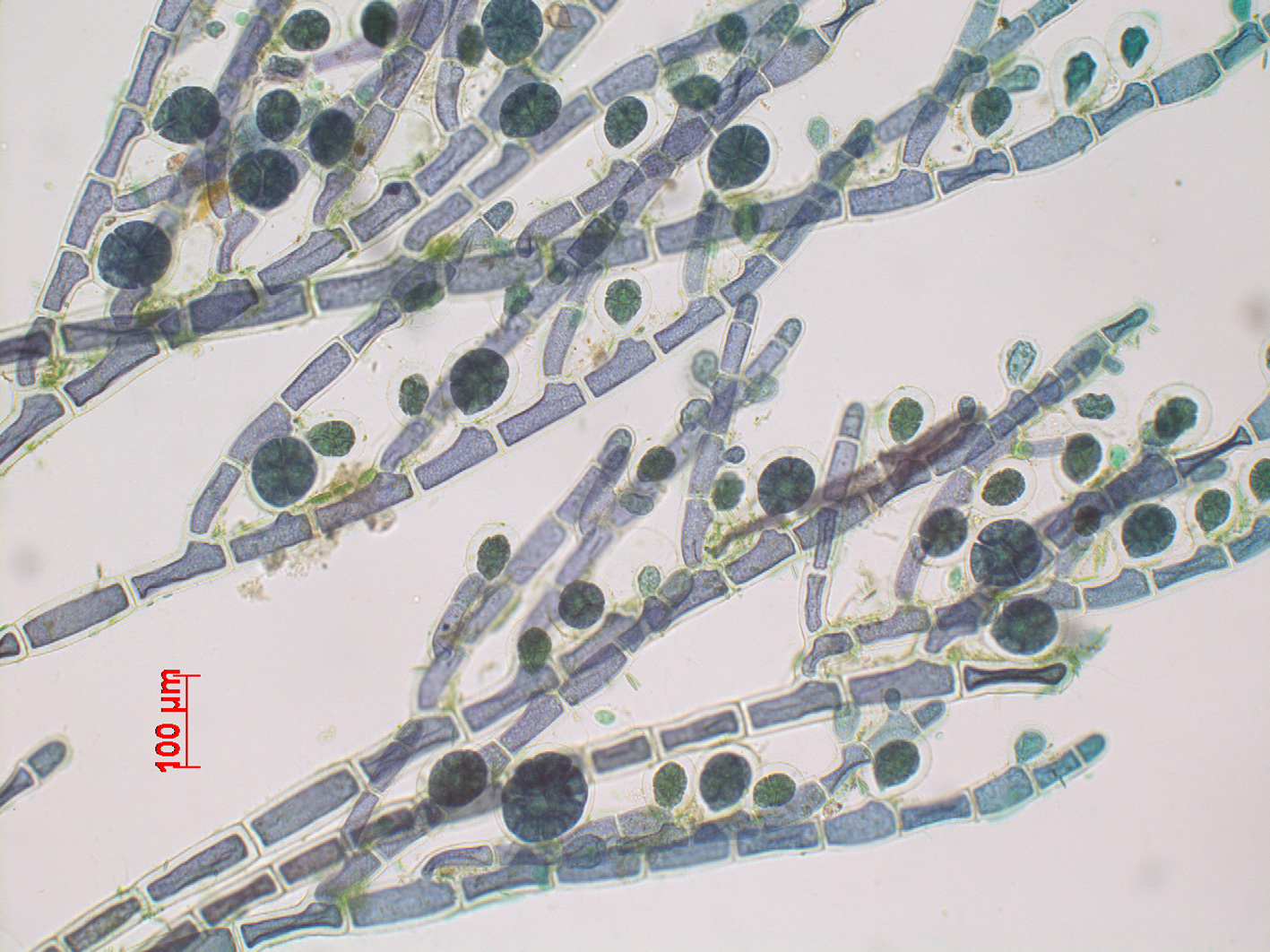
Ptilothamnion polysporum. Polysporangia, Goukamma oyster beds, stained slide.
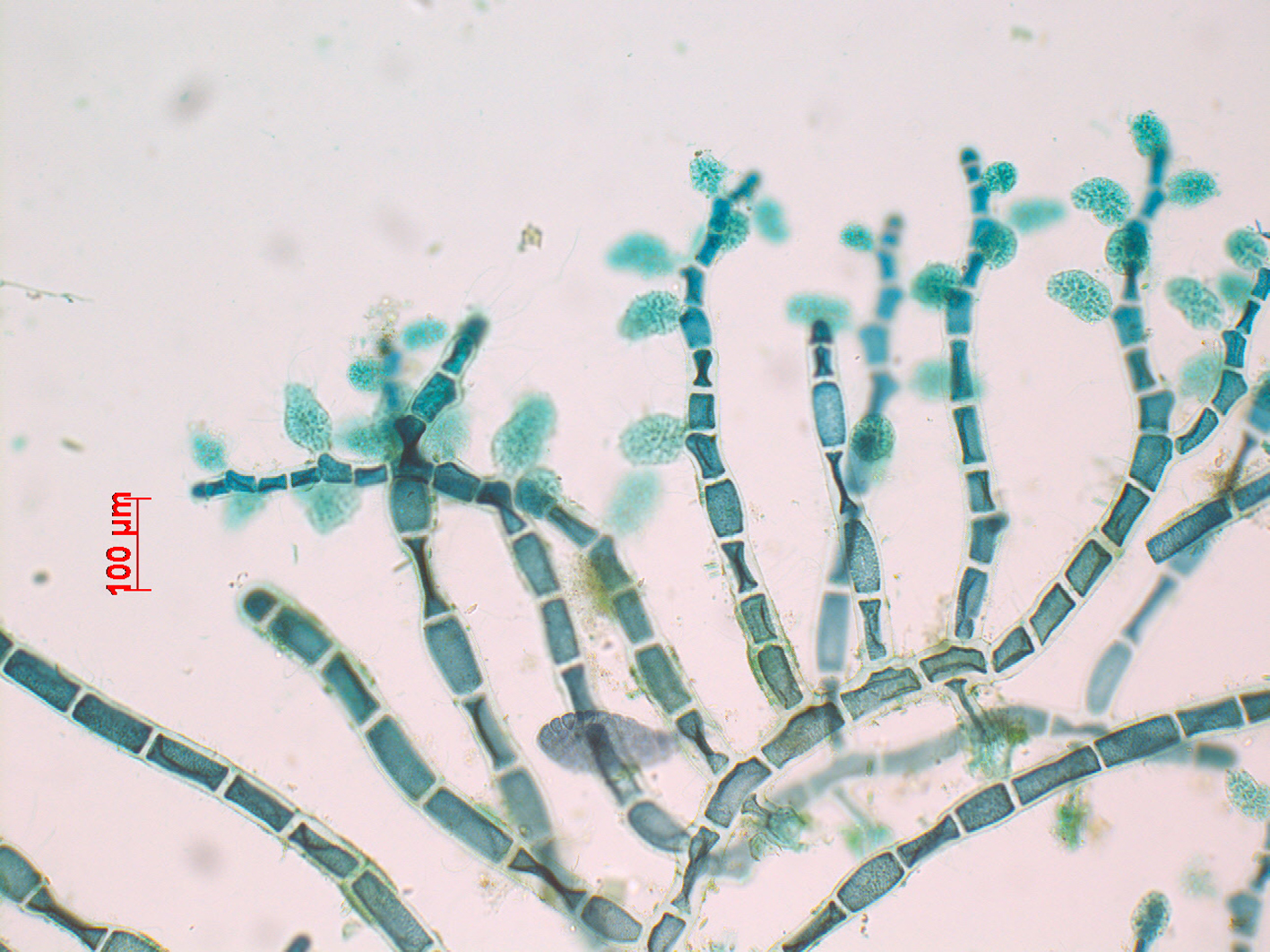
Ptilothamnion polysporum. Male stands, Goukamma oyster beds, stained slide.
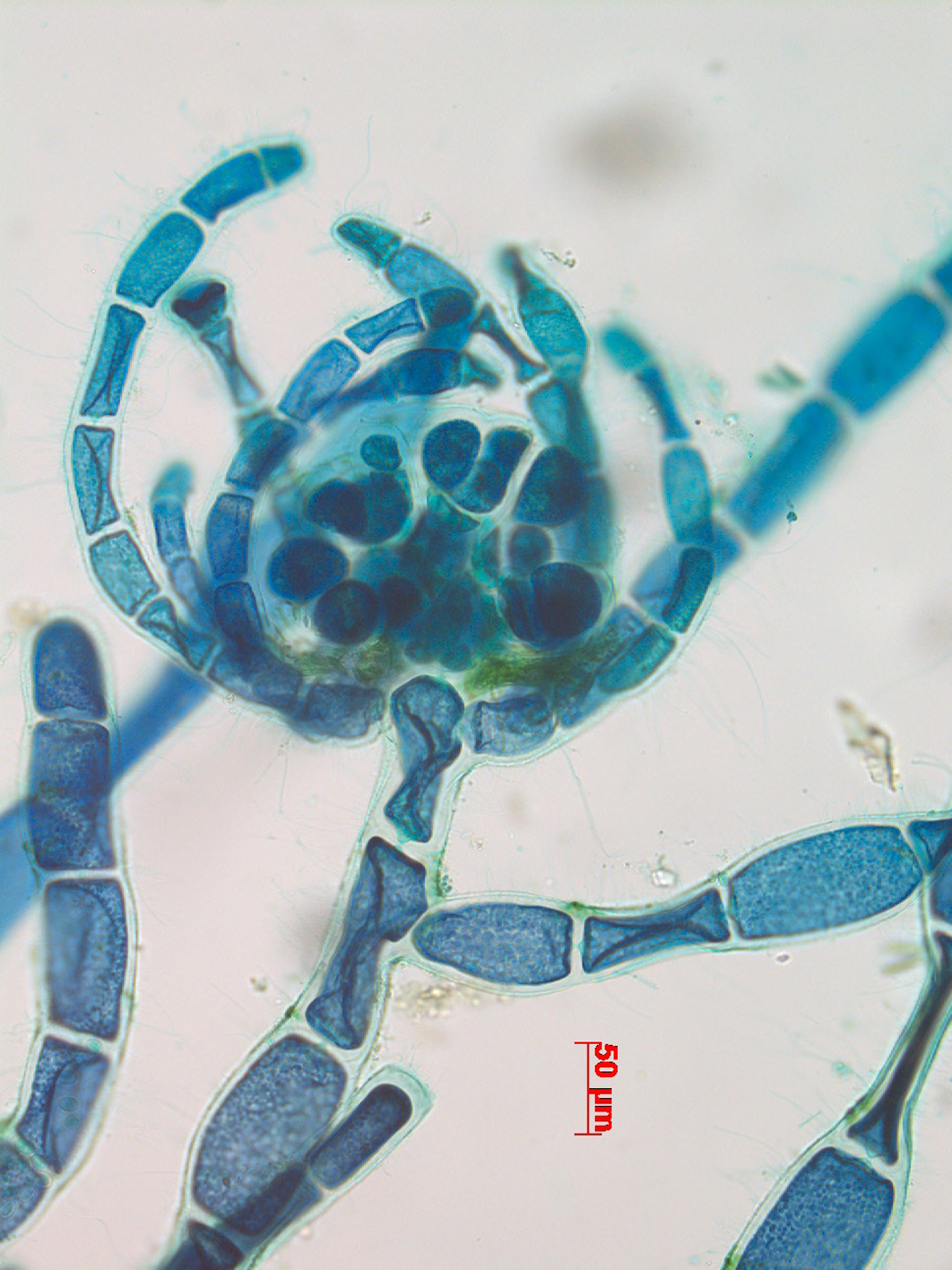
Ptilothamnion polysporum. Carposporophyte, Goukamma oyster beds east, stained slide.
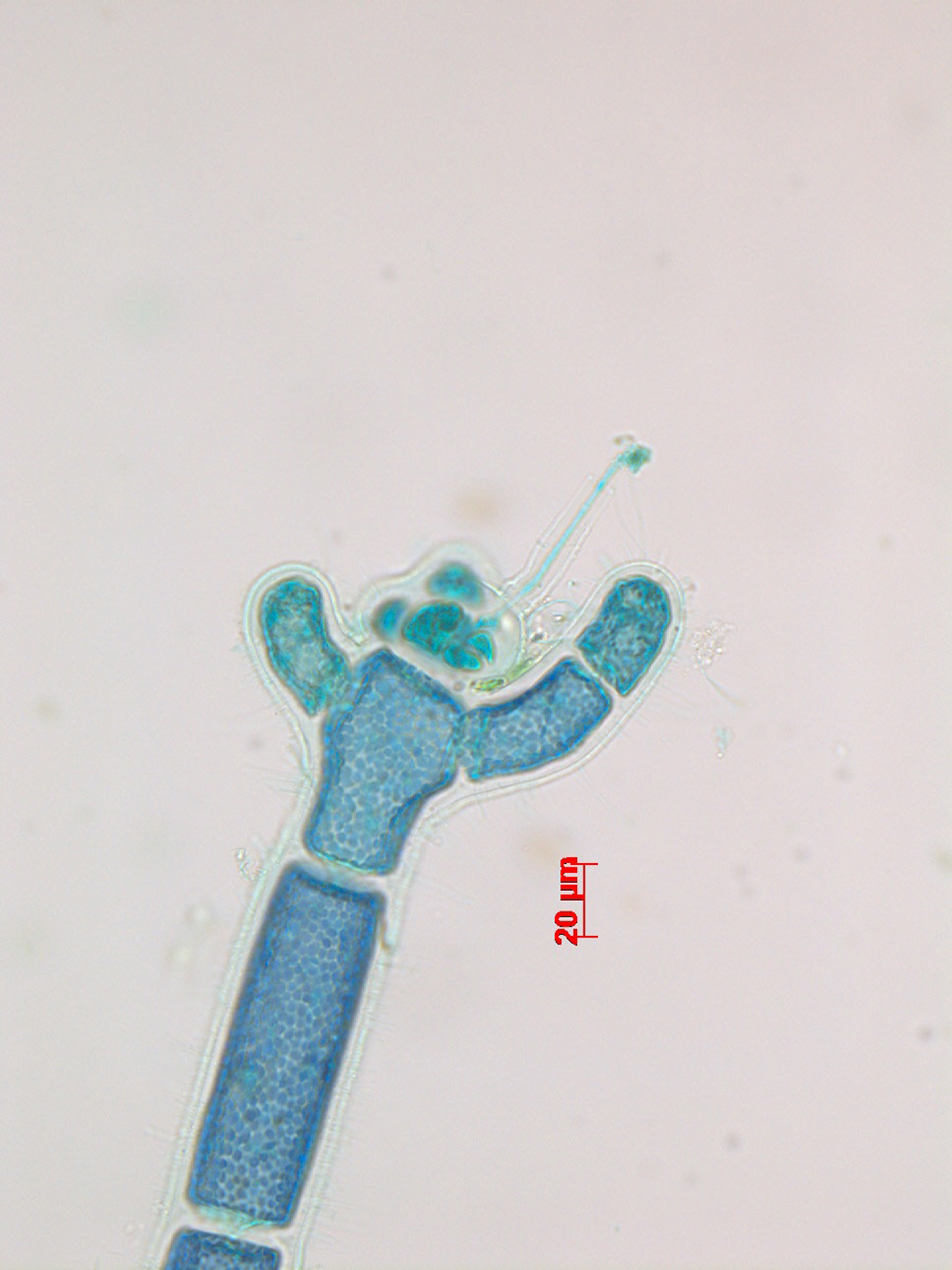
Ptilothamnion polysporum. Female fertile filament, Goukamma oyster beds, stained slide.
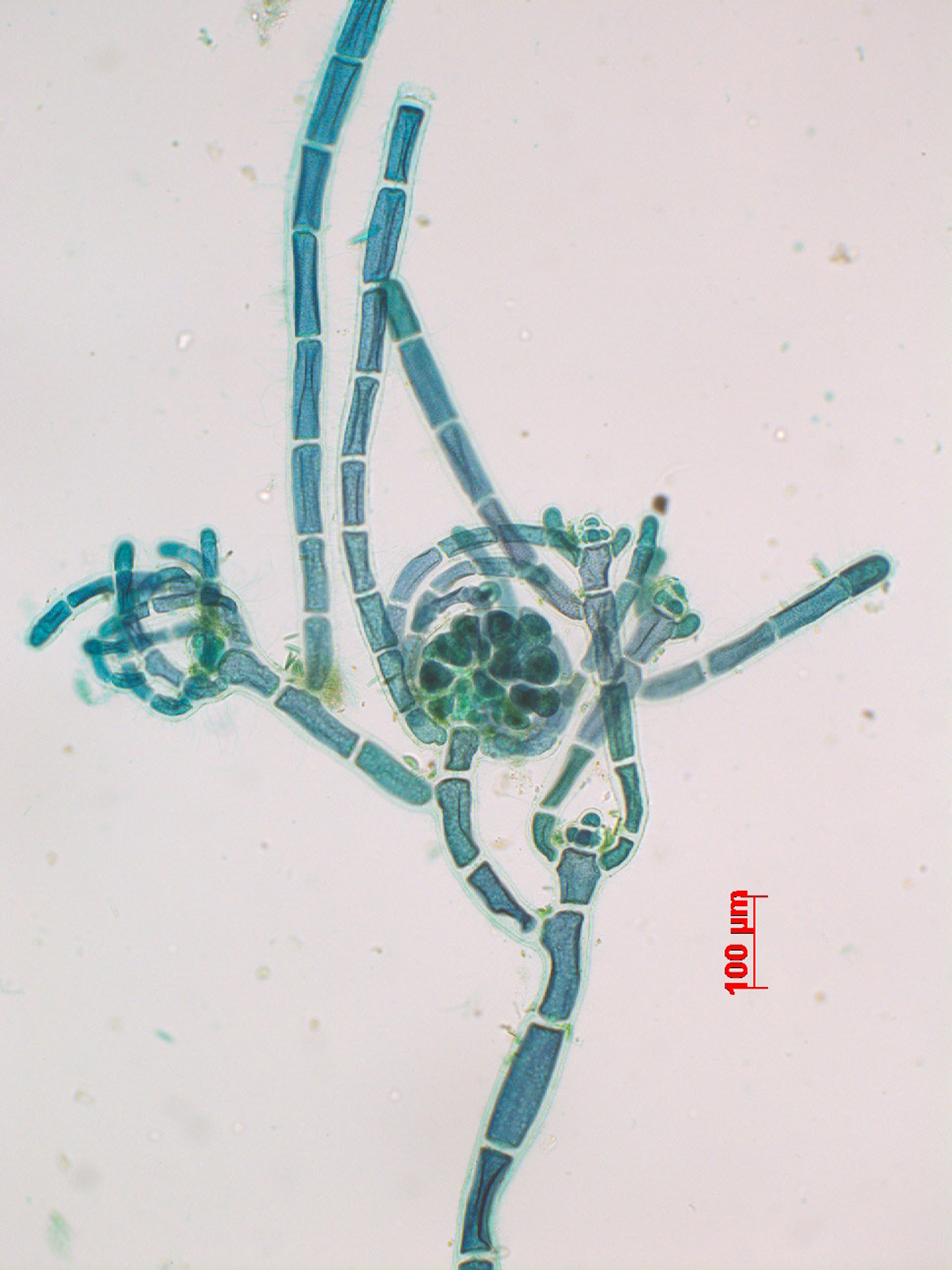
Ptilothamnion polysporum. Repeated branching and formation of female fertile filaments, Goukamma oyster beds, stained slide.
References Ptilothamnion polysporum
Stegenga, H., Bolton, J.J. & R. J. Anderson. 1997. Seaweeds of the South African west coast. Contributions from the Bolus Herbarium 18: 655 pp.
Wollaston, E.M. 1984. Species of Ceramiaceae (Rhodophyta) recorded from the International Indian Ocean Expedition, 1962. Phycologia 23: 281-299, 30 figs.
Cite this record as:
Anderson RJ, Stegenga H, Bolton JJ. 2016. Seaweeds of the South African South Coast.
World Wide Web electronic publication, University of Cape Town, http://southafrseaweeds.uct.ac.za; Accessed on 07 January 2026.